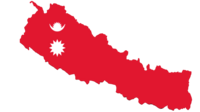Iman Xin Chemjong
Iman Xin Chemjong Limbu | |
|---|---|
| इमान सिंह चेम्जोङ लिम्बू ᤀᤡᤔᤠᤏ ᤛᤡᤲᤜ ᤆᤣᤶᤈᤥᤅ ᤗᤡᤶᤒᤢ  | |
| Born | 1 January 1904 Darjeeling, India |
| Died | 1975 (aged 70–71) Kathmandu, Nepal |
| Nationality | Nepali |
| Alma mater | St. Xavier's College, Kolkata |
| Occupation(s) | historian, writer, linguist, lexicographer |
| Spouse | Amiran Chemjong |
| Children | 5 |
| Parents |
|
Iman Xin Chemjong Limbu, or Iman Singh Chemjong Limbu; was a Limbu historian, writer, linguist, lexicographer, folklorist, and philosopher of Nepal. Chemjong devoted his entire life to studying and documenting various facets of Kirat Limbu tradition and culture at a time when such activities were frowned upon and even punished by the Nepalese ruling elite as being subversive and "anti-national". Chemjong's research into and publication of Kirant history and culture challenged perceptions of the Nepalese official doctrine that showcased Nepal as a Hindu cultural monolith devoid of alternative narratives.
Education
Chemjong received his education at St. Xavier's College, Kolkata, then under the University of Calcutta. In 1928, he completed his certificate level and was about to enroll for a Bachelor degree, when his father, Megbar Singh Chemjong, died. Chemjong junior had to put his academic aspirations on hold.[1]
Early influences
Traditionally, Limbus observed a religion called Mundhum centred on animistic rituals and practices. However, due to assimilation of Limbus into the Hindu mainstream, many Limbus adopted Hindu names and started to participate in Hindu worships and festivals.
Limbus never really severed their ties to their rich religion and culture that stretched back to ancient times. Alongside Hindu goddesses Durga and Laxmi, Limbus continued to worship their own supreme god Ningmaphuma. One such devoted Limbu worshipper was Chemjong's own mother, Devapu Hangma. Limbu Mundum religion is a rich cornucopia of oral traditions encompassing Kirati theology, mythology, history, genealogy, culture and traditions, and having a devout mother gave Chemjong a distinct advantage to learn all these.
A turning point in Chemjong's life came in 1925, when the legendary Limbu activist Lalshore Sendang visited Kalimpong in Darjeeling district and met Limbu elders and activists. Chemjong was one of the many Limbu youths who learned the Limbu Sirijonga script from Sendang and attended his talks on Limbu religion and culture.
Works
Chemjong researched Limbu language and culture in Limbuwan, i.e. East Nepal, the neighbouring hill areas of Darjeeling and Sikkim (then an independent Himalayan kingdom) and also in Assam. In his own lifetime, he published the following works:[2]
- Kirat Itihas (1948)
- Kirat Sahityako Itihas (1955)
- Kirat Folklore (1961)
- Kirat Mundhum (1961)
- Limboo-Nepali-English Dictionary (1961)
- Kirat Mundhum Khahun (1965)
- Kirat History and Culture (1967)
- Kirat Darshanko Saransh (1969)
- Lepcha-Nepali-English Dictionary (1969)
- Bijayapurko Itihas (1974)
Middle name
Although some say that his middle name Xin was spelled as Singh due to mainstream Nepalese or Indian influence, others say Singh is correct because in his book Kiratakalina Vijayapurako Sankshipta Itihasa, Chemjong writes his name in Nepali as Iman Singh Chemjong.
Recognition
In a gesture that went against the grain of prevailing state ideology, King Mahendra invited Chemjong to join Nepal's Tribhuvan University in the capacity of "Limbu expert" in 1961. .In the 1950s and 60s, Iman Singh Chemjong was a name that resonated with respect and admiration. As a scholar from Darjeeling, his erudition and dedication to the cultural upliftment of Nepal were unparalleled. King Mahendra of Nepal, recognizing his potential, invited Chemjong to aid in the construction of a cohesive Nepali nationalism. The king's vision was to foster a sense of unity and cultural pride among the diverse ethnic groups within the kingdom, and Chemjong seemed the ideal candidate to spearhead this intellectual and cultural renaissance.[3]
References
- ^ Unknown (15 November 2015). "HK Nepali Radio / TV: Iman Sing Chemjong". HK Nepali Radio / TV. Retrieved 23 August 2023.
- ^ "Kirat Yakthung Chumlung (KYC)".
- ^ Iman Singh Chemjong Byakttitwa Ra Krititwa. (n.d.). Shop Ratna Online. Retrieved July 22, 2024, from https://shopratnaonline.com/iman-singh-chemjong-byakttitwa-ra-krititwa-iman-singh-chemjong/
External links
- http://www.limbulibrary.com.np/pdf/Kirat%20Dantya%20Katha-Imansing.pdf
- v
- t
- e
- Aagat
- Alikhit
- Basain
- Bir Charitra
- Champa
- Cheerharan
- Damini Bhir
- Draupadi Avashesh
- Dumero
- Faatsung
- Ghamka Pailaharu
- Juino
- Jyoti Jyoti Mahajyoti
- Kara
- Karnali Blues
- Loo
- Madhabi
- Maharani
- Mann
- Mayur Times
- Modiaain
- Mokshabhumi
- Narendra Dai
- Nathiya
- Pagal Basti
- Pathshala
- Palpasa Café
- Parityakta
- Phirphire
- Pratyek Thau : Pratyek Manchhe
- Pretkalpa
- Radha
- Ramite
- Ranahar
- Rupamati
- Saaya
- Sakas
- Sallipir
- Seto Dharti
- Shabdatit Shantanu
- Shirishko Phool
- Summer Love
- Sumnima
- Teen Ghumti
- Ular
- Yogmaya
- Yojana Gandha
- Bairagi Kailaka Kabitaharu
- Dhritarashtra
- Gauri
- Ghumne Mechmathi Andho Manche
- Mohan Koiralaka Kavita
- Muna Madan
- Naya Ishwar Ko Ghoshana
- Pinjada Ko Suga
- Prithviraj Chauhan
- Sagarmatha Ko Gahirai
- Nepali Shakuntal
- Tarun Tapasi
- Abstract Chintan Pyaj
- Antarmanko Yatra
- Belaet Tira Baralida
- China Harayeko Manchhe
- Chhuteka Anuhar
- Ek Haatko Taali
- Hamro Lok Sanskriti
- Janaral Bhimsen Thapa Ra Tatkalin Nepal
- Jiwan Kada Ki Phool
- Karnali Lok Sanskriti
- Khusi
- Khalangama Hamala
- Limbuwanko Etihasik Dastavej Sangraha
- Mahakavi Devkota
- Makaiko Kheti
- Nepalko Balinali ra Tinko Digo Kheti
- Nyaya
- Phoolko Aankhama
- Prayogshala
- Singha Durbarko Ghumne Mech
- Srasta ra Sahitya
- Yaar
- Sharada
- Ruprekha
 Templates
Templates Category
Category WikiProject
WikiProject Nepal portal
Nepal portal

















